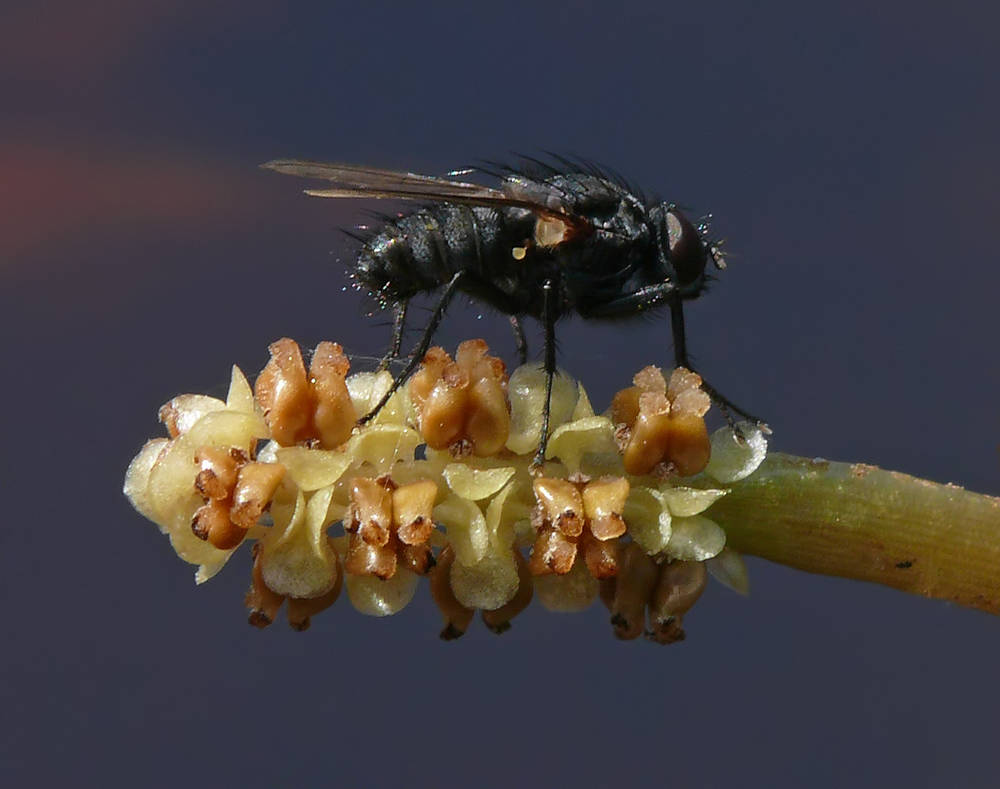
Stems terete, to 200 cm; nodal glands absent.
Leaves submersed and floating or submersed only.
Submersed leaves sessile, attached to stem nodes, not attached to stipules; stipules (12)15–25(40)mm, tip blunt; blades oblong-linear to linear-lanceolate, 45–180(250) × 5–20 mm; base rounded to cuneate; margins entire; tip obtuse or acute; lacunae in 0–6 rows on each side of midvein; veins 7–9.
Floating leaves elliptic or oblanceolate to obovate or oblonglinear, 40–70(100) × 10–25(40)mm, reddish green; base gradually tapering to petiole; tip obtuse or acute; veins (7)9–13(15); petioles 0–12 mm.
Inflorescences emersed; spikes cylindric, 10–35 mm; peduncles terminal or axillary, erect, 30– 100(160)mm.
Fruits pedicellate, obovoid, turgid, (2.5)3–3.5 × (1.7)2–2.4 mm, dorsally keeled, laterally keeled or not; beaks dorsally curved, 0.5–0.9 mm.
Ponds, lakes, and slow-moving streams. 1200–2200m. BR, BW, Casc. CA, ID, NV, WA; north to British Columbia, east to Greenland; Eurasia. Native.
Potamogeton alpinus is often red when fresh. This species hybridizes with P. nodosus, P. gramineus, and P. praelongus.
as described under Potamogeton alpinus
Rhizome present. Cauline stems terete, without spots, to 200 cm; nodal glands absent. . Turions absent. Leaves submersed and floating or floating absent, ± spirally arranged. Submersed leaves sessile, lax; stipules persistent, inconspicuous, convolute, free from blade, light brown to reddish, not ligulate, (1.2--)1.5--2.5(--4) cm, not fibrous, not shredding at tip, apex blunt; blade reddish green, oblong-linear to linear-lanceolate, not arcuate, 4.5--18(--25) cm ´ 5--20 mm, base rounded, without basal lobes, slightly clasping, margins entire, not crispate, apex not hoodlike, obtuse or acute, lacunae in 0--6 rows each side of midvein; veins 7--9. Floating leaves: petioles continuous in color to apex, 0.1--1.2 cm; blade reddish green, elliptic or oblanceolate to obovate or oblong-linear, 4--7(--10) cm ´ 10--25(--40) mm, base gradually tapering into petiole, apex obtuse or acute; veins (7--)9--13(--15). Inflorescences unbranched, emersed; peduncles not dimorphic, terminal or axillary, erect, cylindric, 3--10(--16) cm; spikes not dimorphic, cylindric, 10--35 mm. Fruits pedicellate, tawny olive-green, obovoid, plump, turgid, abaxially keeled, laterally keeled or not, (2.5--)3--3.5 ´ (1.7--)2--2.4 mm, lateral keels when present without points; beak abaxially curved, 0.5--0.9 mm; sides without basal tubercles; embryo with 1 full spiral. 2n = 52.Flowering early summer--fall. Ponds, lakes, and slow-moving streams; 400--2500 m; Greenland; Alta., B.C., Man., N.B., Nfld. and Labr., N.W.T., N.S., Nunavut, Ont., P.E.I., Que., Sask., Yukon; Alaska, Calif., Colo., Idaho, Maine, Mass., Mich., Minn., Mont., Nev., N.H., N.J., N.Y., Oreg., Pa., S.Dak., Utah, Vt., Wash., Wis., Wyo.; Europe; Asia Eurasia.Plants of Potamogeton alpinus often are red whenever taken from the water, a feature that makes this species quite distinctive.Two varieties, Potamogeton alpinus var. tenuifolius and var. subellipticus, have been recognized in North America, based mainly on submersed leaf shape. Plants bearing both leaf types have been observed in the same population; hence the varieties are not recognized.Four hybrids, Potamogeton alpinus × P. nodosus (= P. ×subobtusus Hagström), P. alpinus × P. gramineus (= P. xnericius Hagström), P. alpinus × P. praelongus (= P. ×griffithii A. Bennett), and P. alpinus × P. perfoliatus (= P. ×prussicus Hagström), have been described.